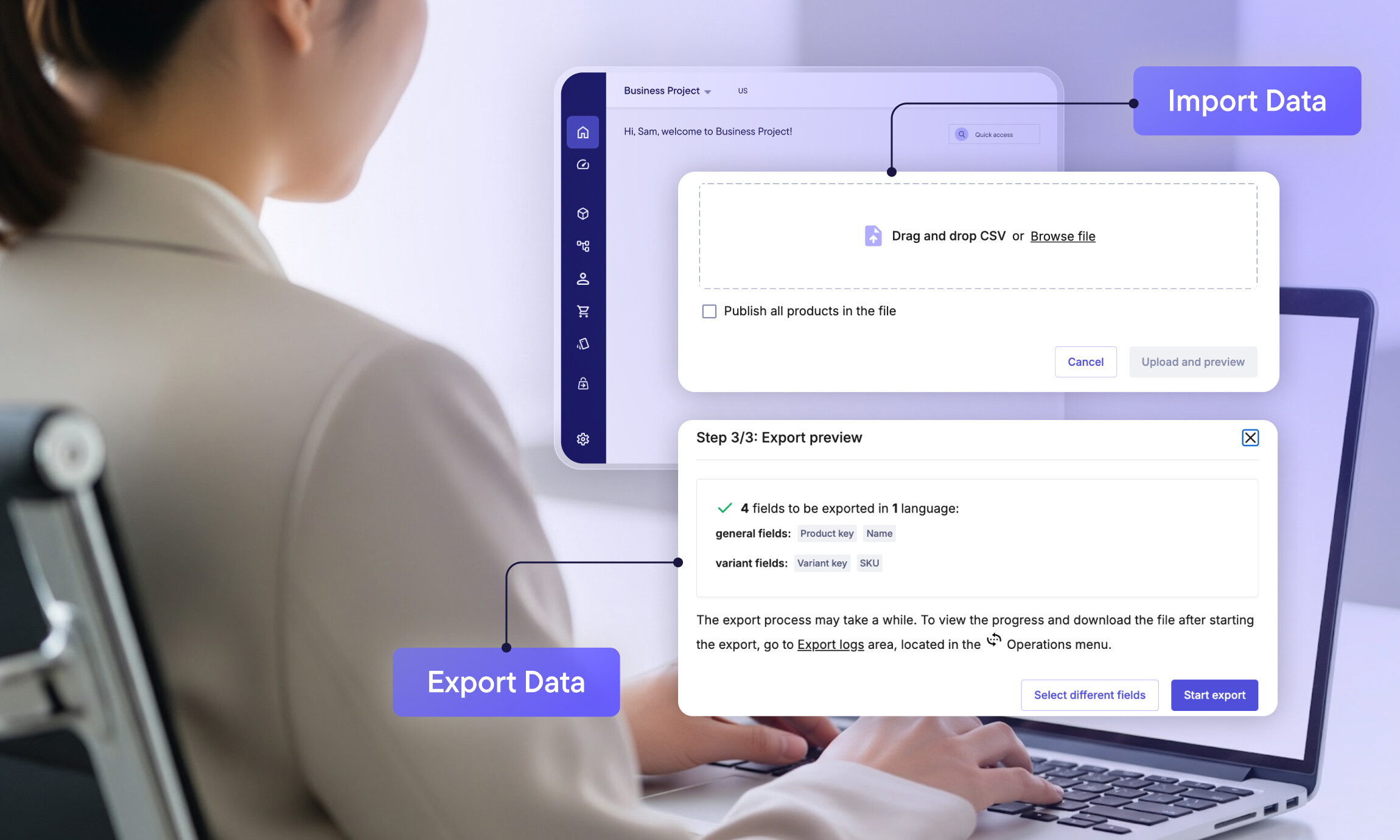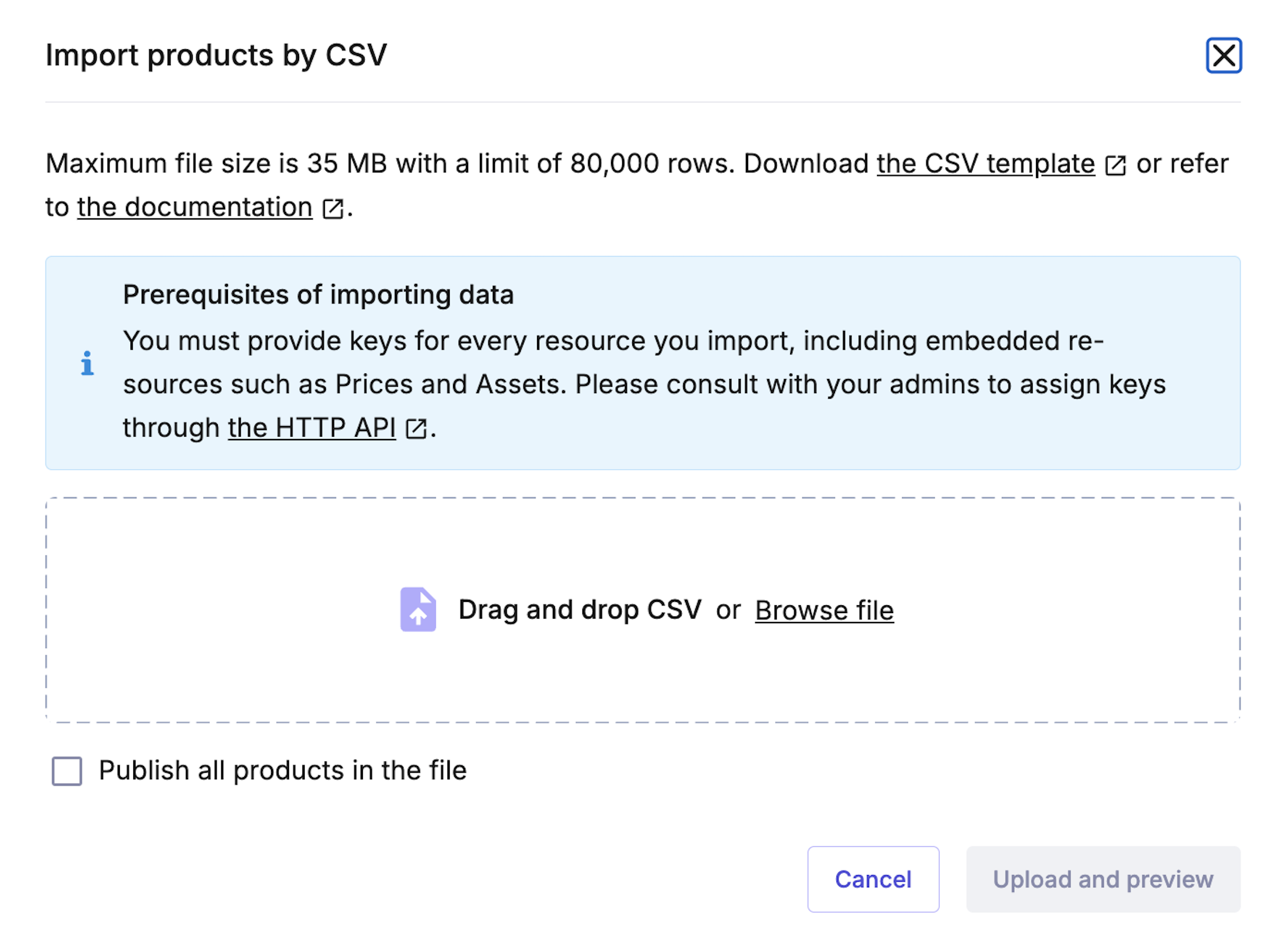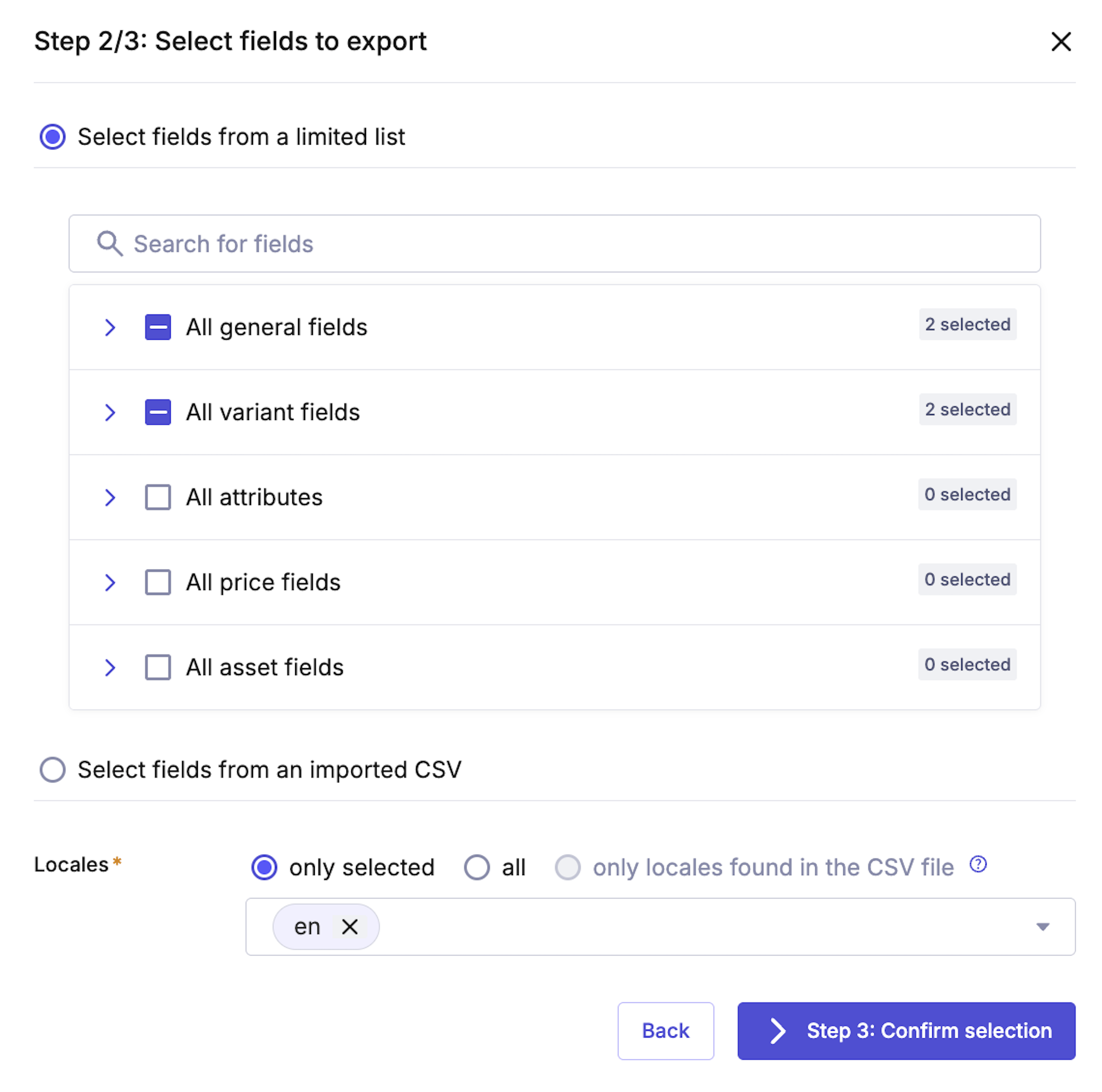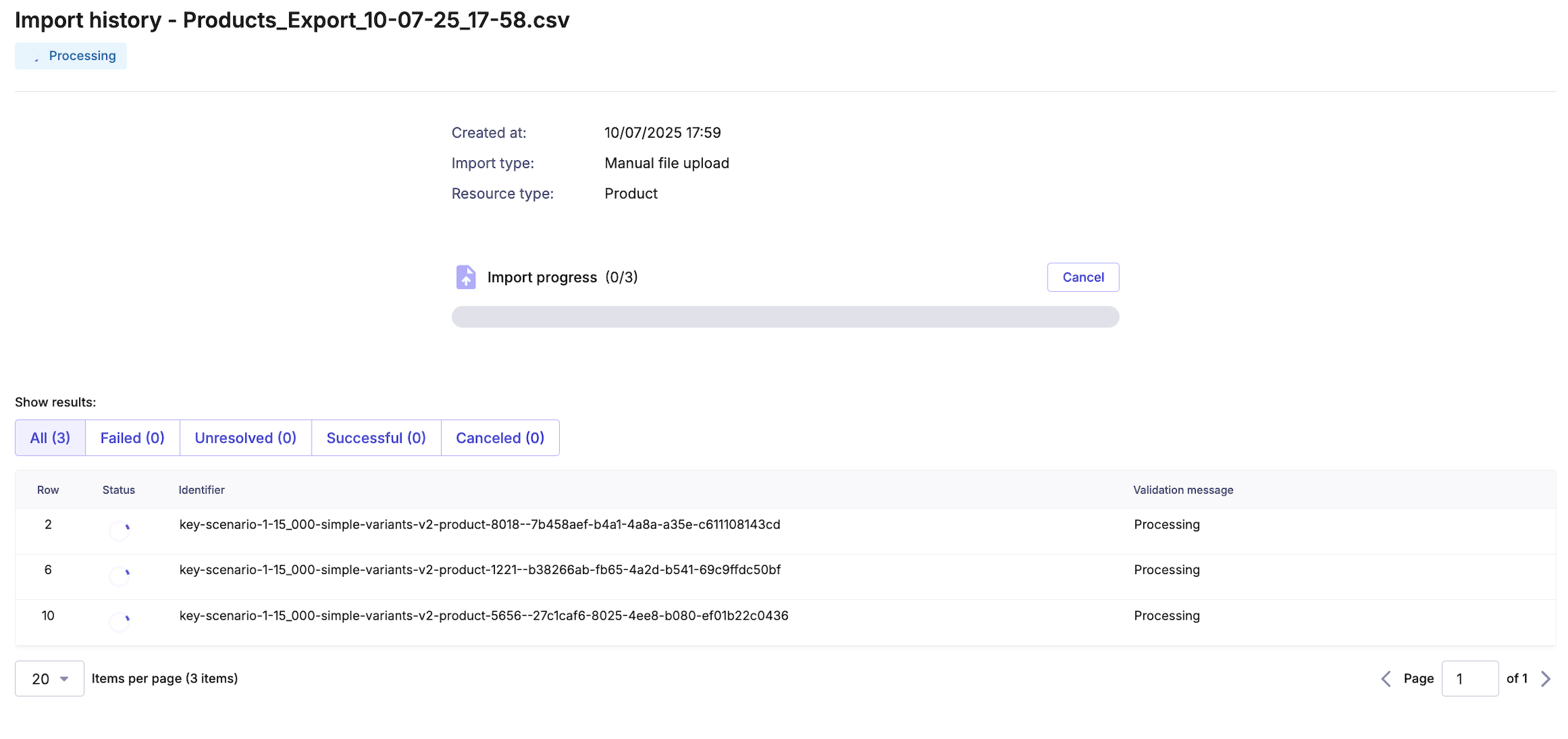
What you’ll learn:

In eCommerce, data isn’t just important — it’s everything. Whether it’s onboarding new customers, keeping product information up-to-date or managing inventory across multiple channels, seamless data import and export capabilities are critical to ensuring business agility, accuracy and scalability.
For many years, commercetools’ customers relied on a tool called ImpEx to manage data flows in and out of the platform. While ImpEx served its purpose at the time, facilitating bulk product uploads and data exports, it became a bottleneck as our platform and customers evolved.
To provide our customers with a best-in-class experience, we now offer intuitive data import/expert capabilities directly in the commercetools Merchant Center, our business tooling for all things commerce. Now, our customers can experience the following five benefits:
All data import and export actions are now performed directly within the Merchant Center — the same interface used for managing products, prices, inventory and more. In short, there’s no more switching between tools or systems.
The process is intuitive and accessible from the relevant resource pages or a centralized import/export section. Import feedback is delivered with precise, line-by-line error messages, making it easier to correct and re-import data. In addition, a built-in job history log lets users track progress, review results and download past reports from one place.
Import and export functionality now fully supports Single Sign-On (SSO) and is integrated with the Merchant Center’s enterprise-grade security framework. This means even customers with strict compliance requirements can confidently use these tools without compromising their standards.
The Merchant Center’s new import/export tooling is built to handle scale. Import files can be up to 35 MB and 80,000 rows, with plans for future expansion.

Exports have no size limits; they may take longer for large datasets, but always complete reliably. Thanks to asynchronous processing, users can launch large data jobs and continue working without interruption.
Users can now export the data they need using flexible filters and simple checkbox-based column selection — no templates required. Need to make bulk changes? Just export your data, edit it in a spreadsheet and reimport it into the Merchant Center.

Structured CSV templates are also available for every supported data type, making it easy to get started and avoid formatting errors.
Finally, by making import/export a native part of the Merchant Center, your teams can iterate faster, reduce technical debt and ship improvements more frequently.
Leveraging data import/export in the Merchant Center
The Merchant Center’s built-in import and export capabilities are designed to support a wide range of workflows, such as customer onboarding and data updates.
Setting up a commerce environment from scratch can be daunting, especially when it involves importing foundational data, such as the product catalog, multiple variants, pricing structures and inventory. With the new import tooling, customers can seamlessly load all this information using structured CSV files, getting their store operational quickly and with minimal friction.

To make the process smoother, the Merchant Center offers downloadable CSV templates tailored to specific data types, such as products, discount codes, categories and inventory. These templates eliminate guesswork, helping users format data correctly and avoid common issues during setup.
Before any data is committed, the system performs robust pre-validation to provide immediate feedback on data errors (e.g., missing mandatory fields, incorrect data types) before the actual import. This ensures cleaner imports and reduces costly post-import fixes.
For large product atalogs, the import process runs asynchronously in the background. Customers can start an import, continue working on other tasks in the Merchant Center and return later to check progress — no waiting or stalling required.
Businesses are constantly evolving — new product launches, pricing adjustments, inventory shifts, promotional changes — and the ability to efficiently manage bulk updates is essential.
Customers can perform partial updates, importing only the fields they wish to change. When updating just a price or inventory count, there’s no need to re-upload full records. This minimizes complexity and dramatically reduces the risk of overwriting correct data.
Updates can be made using key-based matching, where each row in the CSV file references a unique identifier. This ensures the system updates the correct records without creating duplicates, providing both precision and peace of mind.
When an update encounters a problem, the system provides granular error feedback indicating which records failed and why (e.g., invalid value, record not found). Users can correct the issue in their file accordingly and re-import only the affected data, without having to start from scratch.
Finally, export-edit-reimport enables users to export existing data, like product catalogs, edit them in a familiar spreadsheet tool, and then reimport the modified CSV back into the Merchant Center. This workflow simplifies bulk edits and maintains high data quality.
Customers can export vast amounts of specific data (e.g., all products from a particular brand, or items with missing attributes) to perform comprehensive offline reviews. This allows them to identify and correct data inconsistencies, fill gaps or prepare for internal data quality audits using external tools, leveraging the fact that exports no longer have a size limit.
6 best practices for data import/export with commercetools
To get the most out of the Merchant Center’s import and export capabilities, follow these best practices for smoother data management.
Start small: For initial imports or complex updates, we recommend starting with a small batch of data to test the template and mapping before importing the full dataset.
Leverage templates: Start with official CSV templates or export data from the Merchant Center to ensure that formatting, such as correct headers and data structure, matches expectations.
Understand identifiers: Leverage unique identifiers (e.g., productKey, variantKey) for accurate updates and preventing duplicate entries.
Review error reports: Train users to thoroughly review and act on import error reports to maintain data quality.
Utilize asynchronous processing: Encourage users to use background processing for large files, rather than waiting.
Use filters for exports: When exporting data, use the available filter options within the Merchant Center. This allows you to retrieve only the specific data you need, making your export files more manageable and quicker to process.
Get started
Modern commerce demands data management that’s flexible, secure and built to scale. With import and export capabilities fully integrated into the Merchant Center, you can handle complex data workflows with greater speed, precision and ease — all within a single, streamlined interface.
💡Explore our step-by-step guides: